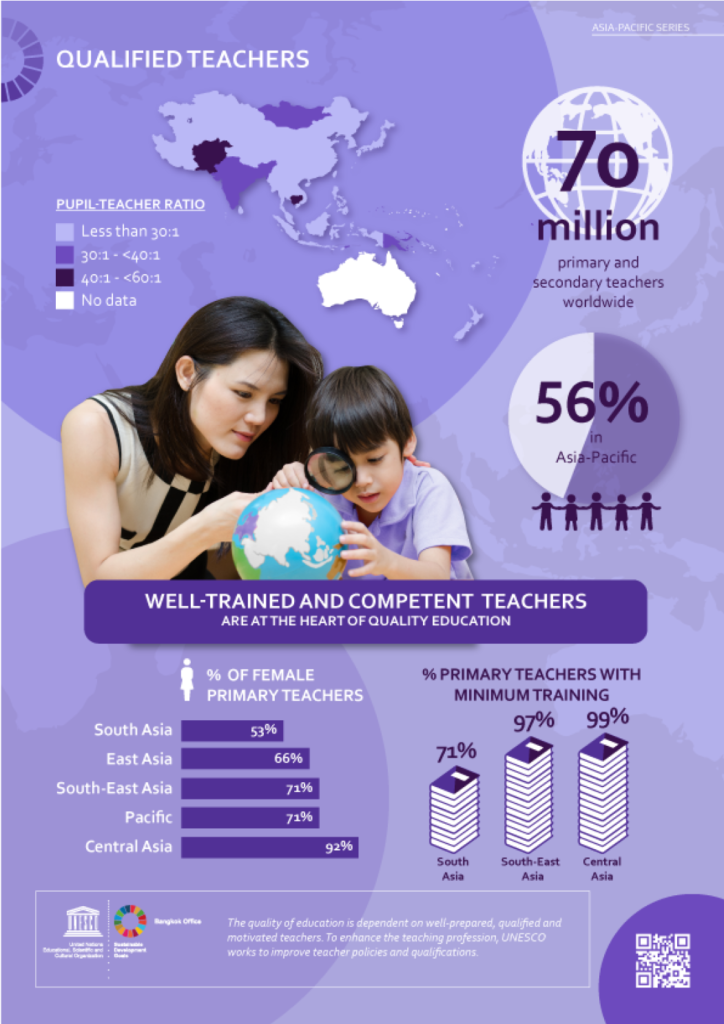Teachers are the most influential school-based factor on students’ performance and achievement. Enormous expectations are laid to this group of experts, without much support or freedom to implement. Teachers, educators, are the interactive agents, operating in variety of learning environments, responsible translating the curriculum, learning materials, contents, and underlying values into a learning experience in collaboration with the learners. Teachers are expected to update their knowledge constantly, adopt new contents, approaches (inclusive, culturally aware, global citizenship, sustainable, peace etc.), tools (digitalization) and develop new methods for better learning. Same time teachers would need to step out of their traditional teacher’s role as the only one in the classroom who has the resources and the knowledge of the learning contents, and instead adopt student centric approach as learning instructor or guide – someone who’s offering resources, supporting development of transversal skills and guidance to students learn skills for life wide learning and 21st century skills.
“Inclusive curricula need to be relevant, flexible and responsive to needs. Evidence from citizen-led assessments in Southern Asia and sub-Saharan Africa highlighted large gaps between curriculum objectives and learning outcomes. When curricula cater to more privileged students and certain types of knowledge, implementation inequality between rural and urban areas arises, as a curriculum study of primary mathematics in Uganda showed. In Australia, 19% of students receive adjustments to the curriculum. Curricula should not lead to dead ends in education but offer pathways for continuous education opportunities (GEM).”
There are 70 million teachers in primary and secondary school globally, of which 56% in the Asia-Pacific. Lack of qualified educators, in-service training and gender disparities are few of many systemic challenges in the education field, and hence targets of SDG 4 (c). In order to ensure quality education for all, there is a need for 69 million new teachers by 2030, which of 48.6 million to replace the retiring professionals. Pupil-teacher ratio is still too high in many Asia-pacific countries and expanding access to secondary education will create challenge for supply of qualified education professionals. Profession is very gendered: teachers are mainly women, but educational leaders mainly men. Especially in the rural areas, there is lack of female teachers, which might affect girls access to education in rural areas and only few men in the profession, do not offer enough role models for boys or culturally or linguistically diverse role models.

It seems like there is not only serious problems with education policy, financing and curriculum but also on the teacher recruitment, retention, remuneration, working conditions and school governance. In order to increase the access to quality education, same time developing transformative education, serious investments to professional development and skills teachers and educational leaders need to be done. These development opportunities will make the profession more attractive and retain the talent.
“A body of evidence now shows that a number of factors impact both positively and negatively on teacher quality or performance. These include: initial education, CPD and qualifications; class sizes and PTRs; employment conditions, including rewards and incentives; working conditions and environment; access to resources; respect for teachers and their perceived social and professional status; involvement in decisions which affect them; and professional autonomy.”
In this page, we’ll be sharing general content related to teachers and educators, teacher policy, development and curriculum. If you are looking for something you can apply in the classroom, we have collected an educator Toolbox with practical tips, which can be found here.



